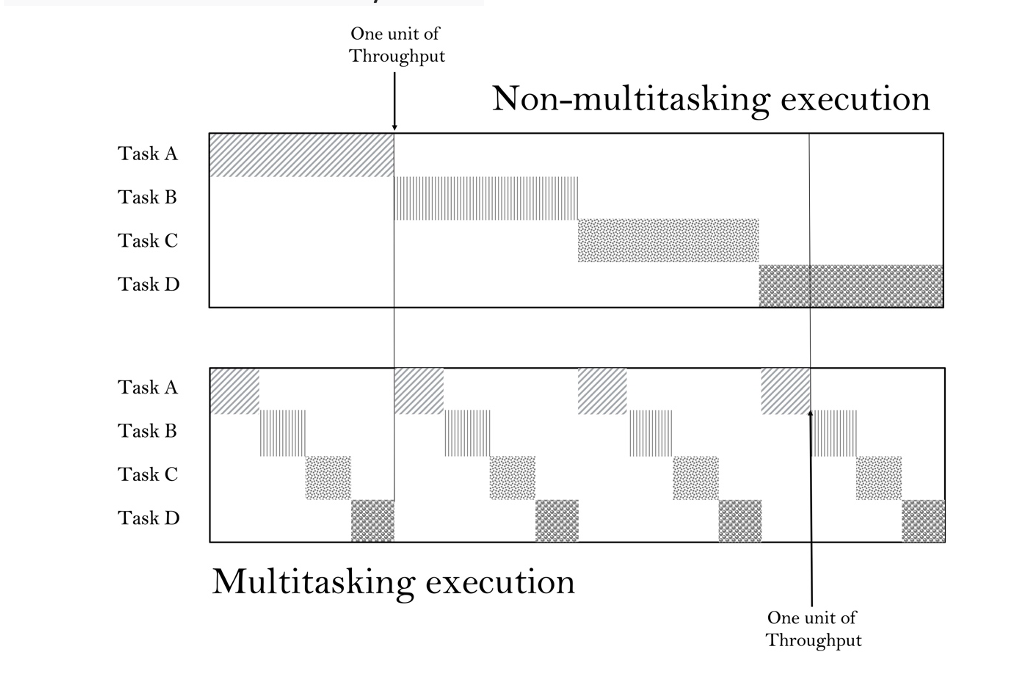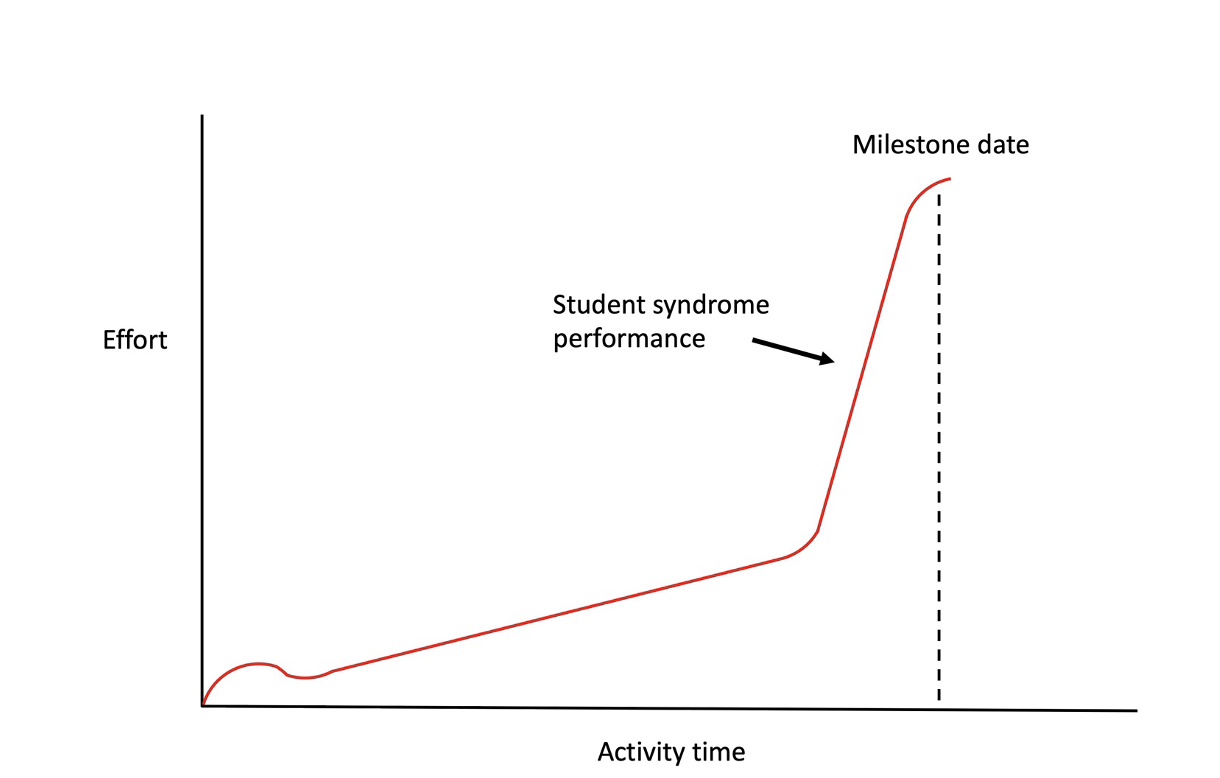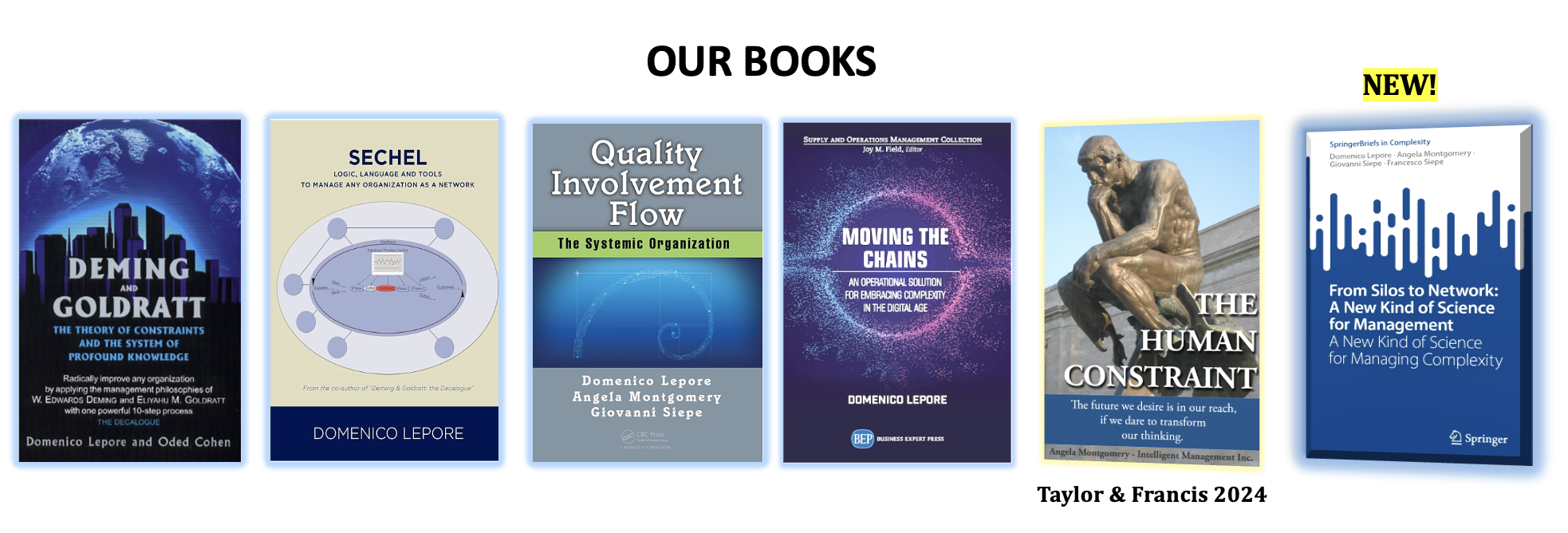 When it comes to managing projects, many people imagine things that are simply not true. For example, it is quite common to think that multitasking is more productive than working sequentially. The assumption behind this statement is that by carrying out more than one task at the same time, we can complete the project in a shorter time.
When it comes to managing projects, many people imagine things that are simply not true. For example, it is quite common to think that multitasking is more productive than working sequentially. The assumption behind this statement is that by carrying out more than one task at the same time, we can complete the project in a shorter time.
This is simply not true.
Don’t multitask
Multitasking, as many studies suggest, reduces the ability of the prefrontal cortex when it comes to focus.

Multitasking also has several negative effects, and two major ones are:
- If you multitask it takes you much longer to generate the first unit of your goal
- If you multitask it makes you perceive of the duration of a task as much longer than it really is (this is one of the reasons why, during the planning phase of a project, people tend to overestimate the duration of tasks)
Furthermore, when switching from one task to the next we must account for a “setup time” to refocus our mind so we can work on the new task.
Don’t insert milestones
Another example of misguided thinking about projects is positioning “milestones” in the project to set local goals for the resources executing the tasks. Unfortunately, inserting milestones in the project triggers the so called “student syndrome”:

This empirical chart stresses the fact that the amount of effort we put into the execution of a task is never even and it follows the trend illustrated. Inserting milestones throughout the project triggers precisely this kind of behaviour where we rush at the last minute. What is needed, instead, is a constant amount of effort during the execution of each and every task.
Let’s talk about projects then.
What is a project? It’s a set of actions required to satisfy specifications (often set by a client) in an established timeframe and within a predefined budget.
Hence, a Project is a set of interdependent tasks that must be carried out within a precise framework of time, budget, and specifications. Similarly, a System is a framework designed so that a set of interdependent processes can achieve a common goal.
Therefore, we can safely say that a Project is a System, and it should be considered as such.
Multitasking or inserting milestones (local goals) in a project violates the equivalence “Project – System”.
Do analyze and plan
One further “creative” idea that people have is that the maximum effort in a project must be spent in execution and not wasted in analysis, strategy, and planning.
This is paradoxical.
The phase of execution must be as smooth as possible and as quick as possible in order to have our product/service ready for the market before our competitors. The maximum effort should be dedicated to the phases of Analysis, Strategy, and Planning. During these three initial stages we have to make sure to avoid, as far as possible, changes in direction and backtracking in later stages. We can be confident that all the effort invested upstream will be beneficial for a smooth and quick execution.
Dr. W. Edwards Deming also proved this assertion mathematically (The New Economics, MIT press 1994).
In conclusion, any “creativity” connected with how to manage projects should be focussed on how to avoid bad behaviors rather than devising new tricks to improve efficiency.
Let’s remember that there are two basic elements that allow us to successfully complete projects: correct synchronization of the tasks (through a proper finite capacity algorithm) and a coherent set of behaviors.
We have a LOT more to say about project management in all our books especially the new one ‘From Silos To Network: A New Kind of Science for Management’.
To find out more about ten guided steps to a systemic leap ahead for your company, contact Angela Montgomery at intelligentmanagement@sechel.ws
SCHEDULE AN INTRODUCTORY CALL WITH US
Intelligent Management works with decision makers with the authority and responsibility to make meaningful change. We have helped dozens of organizations to adopt a systemic approach to manage complexity and radically improve performance and growth for 25 years through our Decalogue management methodology. The Network of Projects organization design we developed is supported by our Ess3ntial software for multi-project finite scheduling based on the Critical Chain algorithm.
See our latest books: From Silos to Networks: A New Kind of Science for Management from Springer, Moving the Chains: An Operational Solution for Embracing Complexity in the Digital Age by our Founder Dr. Domenico Lepore, and ‘Quality, Involvement, Flow: The Systemic Organization’ from CRC Press, New York by Dr. Domenico Lepore, Dr. .Angela Montgomery and Dr. Giovanni Siepe.





Leave a Reply